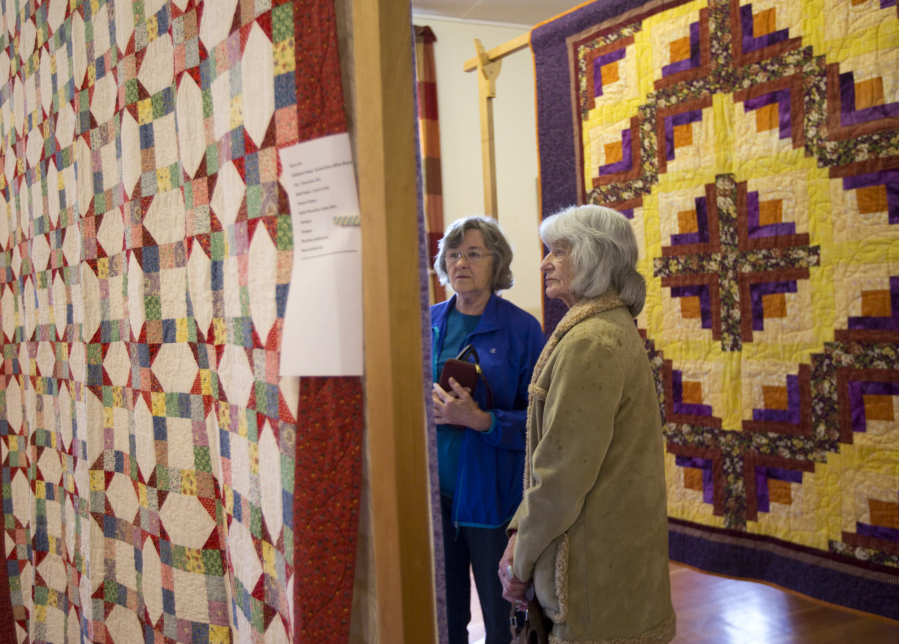Cathy Green of Washougal has multiple quilting projects going right now, but that’s not uncommon for a quilter.
“You’ve gotta get out of the fabric that’s in front of your face and look at some other things every once in a while,” she said while examining the quilts on display at the Mountain Valley Grange hall in Amboy, hung as part of the North Clark County Historical Museum’s 12th annual quilt show.
Dozens of quilts, from heirlooms to original compositions, with all manner of block patterns and fabric choices, were on display at the grange and museum over the weekend.
Among the quilts on display was a loaned “crazy quilt” from the late 19th century to early 20th century. Crazy quilts are typically made with a complicated, seemingly haphazard patchwork of varying materials, and embellished with elaborate embroidery.
Vancouver woman in semifinals of international quilt show
Vancouver’s Deborah Watson is a semifinalist in an international quilting show.
Watson’s quilt, SEW CHEVY, has been picked to go on display with 403 other quilts at the American Quilter’s Society’s 2017 QuiltWeek spring event in Paducah, Ky., set for April 26 to 29.
Judges will award first-, second- and third-place prizes in 16 categories, along with nine overall awards, with $125,000 in prizes to give out.
The winners will be announced at the awards presentation April 25.
The organization said the show is expected to draw more than 30,000 people, and quilts entered in the show come from 44 states and 15 countries.
Green said it was her first visit to the Amboy quilt show, and that seeing others’ work is a way to find inspiration or work through a problem.
“It’s a new way to look at something that I’m working on or thinking about working on,” she said.
It’s also nice to see that not everyone is perfect, Green said, and that there’s always room to keep trying and improve.
“You never stop learning,” she said.
The show has taken off since it started, with interest growing to the point that the organizers split it between the North Clark County Historical Museum building and the nearby grange.
The quilts complement the museum’s old church building and exhibits, historical society board member Judi Malinowski said, and the museum had the space, so it all just made a good fit to start the show there 12 years ago.
The northern part of the county seems rife with quilters, she said, which has brought the annual quilt show staying power. There are those who are older and quilt by hand as a hobby, or for a kind of relaxation, she said.
“The other ones, the ones who are doing these new quilts with the long-arm (sewing) machine — very creative,” she said. “I think it’s an art.”
Barbara Sizemore was in the museum’s lower level Sunday working on a Dresden plate-style design, made with reclaimed flour sacks and other materials, from around the time of the Great Depression.
Hard times, she said, tend to make for good art.
“Our deepest times of need are when our quilters come out and do great things,” she said.
Part of the ongoing appeal of quilting, she said, is that connection to history.
Quilting traditions and history date back hundreds of years and span issues of the practical, such as how people acquired fabric and made due with scraps, to the social and cultural, such as how women would form quilting groups and create regional design styles.
Quilting can also connect people to family, she said.
“Every kid who has ever had a quilt from their mother or their grandmother will remember that for their whole lives long,” she said. “Getting wrapped up in a quilt is one of the things that makes you feel warm and loved and secure.”




